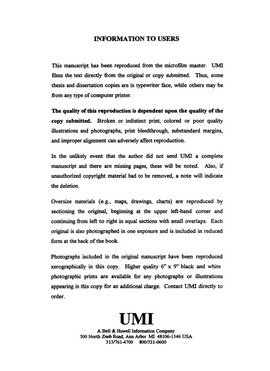| dc.contributor.advisor | Zaman, Musharraf M., | en_US |
| dc.contributor.author | Tian, Ping. | en_US |
| dc.date.accessioned | 2013-08-16T12:29:58Z | |
| dc.date.available | 2013-08-16T12:29:58Z | |
| dc.date.issued | 1998 | en_US |
| dc.identifier.uri | https://hdl.handle.net/11244/5606 | |
| dc.description.abstract | Layer coefficients were calculated for use in the design of flexible pavements by using the AASHTO design methodology. Multiple linear regression models were developed for predicting the layer coefficients of the two aggregates. Finally, the effects of gradation, moisture content, and drainage condition on the design parameters were explained through design examples involving the design of three layer flexible pavements. | en_US |
| dc.description.abstract | In this study, an evaluation of resilient modulus (RM) of aggregate materials and its application in AASHTO flexible pavement design were investigated. Two different aggregates, a limestone and a sandstone, that are considered good quality aggregates and are commonly used as the base/subbase course of pavements in Oklahoma were used. A series of RM tests was conducted to investigate the effects of testing procedure, material gradation, moisture content, drainage condition, and material type on the RM values. The variabilities of RM values due to these effects were investigated in detail and the layer coefficients required by the AASHTO design equation were evaluated. | en_US |
| dc.description.abstract | Unconfined compressive strength and triaxial compression tests were conducted to evaluate the static strength properties of the tested specimens. Multiple linear regression models were developed to correlate the RM with other important properties such as the bulk stress, moisture content, and gradation factors. | en_US |
| dc.description.abstract | Three gradations and three moisture contents were selected to investigate the effects of gradation and moisture content on the RM values. Undrained RM tests were conducted and the excess pore pressure generated during the tests was measured to examine the effect of drainage condition on the RM values. Two types of undrained cyclic triaxial tests were used in order to simulate the different traffic situations in the field. | en_US |
| dc.description.abstract | The AASHTO standard testing procedure T 294-94 was used in conducting the RM tests. The major differences between the standard and the interim (T 292-91I) testing procedures were compared and their effects on RM values were evaluated with respect to the sample conditioning, applied stress sequence, number of loading cycles, loading duration and frequency, and loading waveform. | en_US |
| dc.format.extent | xxiii, 242 leaves : | en_US |
| dc.subject | Pavements, Flexible Live loads. | en_US |
| dc.subject | Engineering, Civil. | en_US |
| dc.subject | Aggregates (Building materials) | en_US |
| dc.title | Evaluation of resilient moduli and layer coefficients of aggregate materials for AASHTO flexible pavement design. | en_US |
| dc.type | Thesis | en_US |
| dc.thesis.degree | Ph.D. | en_US |
| dc.thesis.degreeDiscipline | School of Civil Engineering and Environmental Science | en_US |
| dc.note | Major Professor: Musharraf M. Zaman. | en_US |
| dc.note | Source: Dissertation Abstracts International, Volume: 59-01, Section: B, page: 0336. | en_US |
| ou.identifier | (UMI)AAI9822823 | en_US |
| ou.group | College of Engineering::School of Civil Engineering and Environmental Science | |
